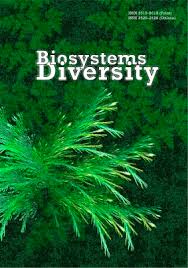Agroeconomic and agroecological aspects of spatial variation of rye (Secale cereale) yields within Polesia and the Forest-Steppe zone of Ukraine: The usage of geographically weighted principal components analysis
Agroeconomic and agroecological aspects of spatial variation of rye (Secale cereale) yields within Polesia and the Forest-Steppe zone of Ukraine: The usage of geographically weighted principal components analysis
Author(s): O. М. Kunah, O. Y. Pakhomov, A.A. Zymaroieva, N. I. Demchuk, R.M. Skupskyi, L.S. Bezuhla, Y.P. VladykaSubject(s): Agriculture, Environmental Geography, Evaluation research, Human Ecology, Environmental interactions
Published by: Дніпропетровський національний університет імені Олеся Гончара
Keywords: geographically weighted principal component analysis; yield; rye; spatial variability; temporal dynamics;
Summary/Abstract: In the present article, the patterns of the geographic variability in yields of rye within Polesia and the Forest-Steppe zone of Ukraine are presented and the correlation of the factors and dynamics of an agroeconomic and agroecological nature was determined. The dynamics of rye yields in the study area over time were determined as being characterized by three extreme points: two local maxima and one local minimum. Specific terms of the polynomial curve of the fourth order can be meaningfully interpreted and applied to describe the dynamics of productivity. Free members of the polynomial indicate culture productivity in the starting period. Dynamics of the productivity that can be explained by the regression indicate that agrotechnological and agrecological conditions of agricultural production are a pervasive factor that determines the presence of a general trend. The determination coefficient of the regression total trend can be interpreted as an indicator of the role of the agrotechnological and agroeconomic factors in the dynamics of productivity. The residue of the trend regression model can be interpreted so as to include the agroecological component of the rye yields dynamics.
Journal: Biosystems Diversity
- Issue Year: 26/2018
- Issue No: 4
- Page Range: 276-285
- Page Count: 10
- Language: English

